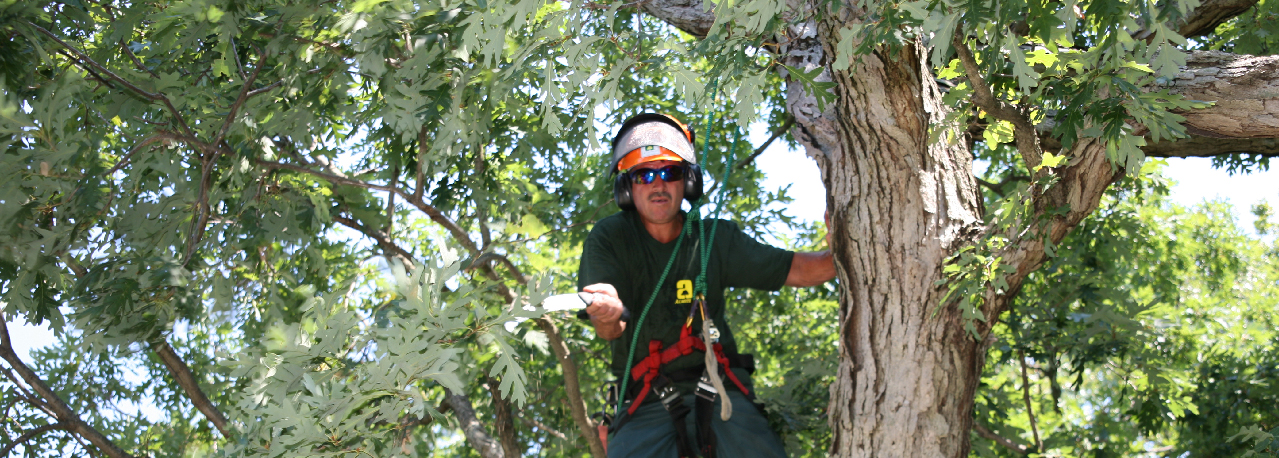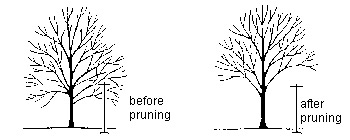
The science of preserving nature since 1964
Please contact us for a FREE Consultation


Tree Care: Tree Pruning
Together with the American National Standards Institute, a committee composed of experts in the field of arboriculture has developed standards for pruning and other aspects of tree care. These standards provide a higher, more uniform level of service and help ensure public safety. At Almstead, we strictly adhere to these standards (ANSI A300) as well as the pruning principals set forth by the International Society of Arboriculture and the Tree Care Industry Association.
As one of the most common and essential tree maintenance procedures performed, proper tree pruning helps maintain safe, healthy and attractive landscape trees. At Almstead, our skilled personnel have a thorough understanding of how, when and why to prune, ensuring that each and every cut made to your trees will only contribute to their longevity.

A variety of pruning objectives are used in maintaining the health, beauty, safety, and usefulness of trees.
Why Prune?
The most common reasons for pruning ornamental and shade trees include promoting healthy growth, correcting structural defects or improving aesthetics. As every alteration made to a tree has the potential to impact its growth, it is important that pruning typically be done for only the following reasons:
Pruning for Structure
Several structural elements of a tree such as the spacing, growth rate, strength of attachment and ultimate size of branches and stems are improved through the removal of live branches and stems. This type of pruning is most common in young and medium sized trees as it reduces the risk of tree failure through the promotion of structurally sound trunk and branch architecture.

Pruning for structure is especially important in young to middle aged trees to ensure a stable, aesthetically pleasing permanent shape. (Image - E Gilman, UFlorida)
Pruning to Clean
A tree's canopy is cleaned through the removal of crowded, weakly attached, dead, cracked or broken branches and low-vigor branches. Cleaning is the preferred type of pruning in mature trees as it maintains their health by not removing live branches unnecessarily.

Regularly pruning to clean the canopy of a tree is essential to maintaining good health and proper structure.
(Image - E Gilman, UFlorida)
Pruning to Thin
A selective number of small live branches are removed in order to reduce crown density and allow for better light filtration and air movement throughout the crown. It can also reduce the weight of heavy limbs and helps retain the tree's natural shape. Thinning is ideal when a lawn, ground covers, or shrubs beneath a tree need to receive more sunlight or airflow to reduce weight and drag at branch ends.
Pruning to Raise
Vertical clearance over structures including buildings, signs and vehicular or pedestrian pathways can be created through the selective removal of the lowest branches. This encourages the middle and top branches of a tree to grow, thereby raising its entire canopy.

The key to raising the canopy away from structures and pathways is to also maintain a balanced structure for the tree. (Image - International Society of Arboriculture)
Pruning to Reduce
The height or spread of a tree is reduced to provide clearance from objects, such as buildings and utility lines, by reducing or removing limbs on that side of the tree. By only pruning back the leading branches, the structural integrity and form of the tree can be maintained during reduction.
Prune to Restore
Trees that have been severely headed, vandalized, broken in a storm or otherwise severely damaged can be selectively pruned to improve structure, form and appearance.

Pruning to restore storm damage done to a tree combines a number of pruning techniques, often including pruning to restore damaged areas of the canopy. (Image - E Gilman, UFlorida)
Vista Pruning
Although natural specie characteristics are always taken into account, trees and shrubs may be pruned in various ways to achieve a special effect or look to your landscape. For instance, clearing select live branches at the edge of the crown to reveal a view of a lake, river or a garden can be performed without the need to cause irreparable damage to a tree or even worse, remove it completely.

Lower Westchester 914-576-0193 I Upper Westchester 914-741-1510 I Fairfield County, CT 203-348-4111 I Bergen & Passaic County, NJ 973-636-6711
Make a Payment I Careers at Almstead I Commercial Care I Tree Care I Lawn Care I Plant Health Care I Organic I Consulting I Nursery & Mulch I Insect Control I Newsletter I Contact Us
Copyright 2023 Almstead Tree, Shrub & Lawn Care Company I All rights reserved I Content on this site cannot be used without permission.


